Managing Small Pastures for Horses in Alaska
LPM-00746 View this publication in PDF form to print or download.
by Marla K. Lowder
The U.S. Department of Agriculture defines pasture as “land used for livestock grazing that is managed to provide feed value and maintain or improve soil, water and vegetative resources.” The goal of this publication is to give you a better understanding of what is required to develop and maintain a viable Alaska horse pasture and to help you become a better pasture manager.
Pasture Planning
Serious consideration must first be given to what you are looking for in a pasture. In addition to providing fresh, high quality feed, horse pastures offer animals a natural environment, freedom, safety and stress relief.
Pastures also carry inherent risks to horses, including cuts from wire, possibility of escape and increased exposure to poisonous weeds and parasites.
A word of caution: Be aware that horses can easily founder (develop a severe, chronic hoof lameness) if they are suddenly exposed to lush pasture feed or any sudden changes in diet. When turning horses out for the first few times into a new pasture, or for the first time in the spring, do it for only a few hours or a half a day and gradually build up to full time grazing. Another way to avoid the possibility of foundering is to fill your horses with hay before turning them out. This will reduce overconsumption of the forage grasses.
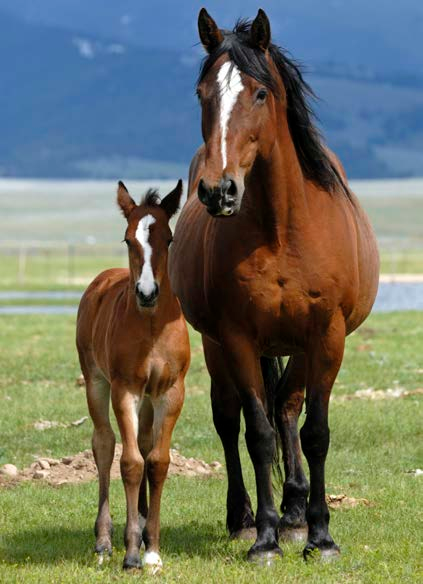
The amount of actual forage production per given area will determine a pasture’s carrying capacity. Animal consumption must be balanced with pasture production if pasture sustainability is to be achieved. Grazing too many animals on too little forage is a guaranteed recipe for crop failure and animal decline. Horse owners should think of pasture feed as a supplement to dry feed (hay and grain), rather than using dry feed as a supplement to pasture feed. Lush grass in the early summer is very high in water content. If dry feed is not fed in conjunction with pasturing, the horse may be unable to eat enough fresh grass to fulfill its nutritional requirements. The following information will help you realize your pasture development goals.
Farm Plan
Planning a farm development strategy will not only give you a guide to follow, but will also help you estimate the feasibility of your proposed projects over time. Your Natural Resources Conservation Service (NRCS) district office staff can help you develop a farm plan. Not only do they offer cost-share programs, they also provide a model to help you inventory, plan and evaluate each phase of your farm development goals and objectives, including pasture development.
Stocking Rate/Carrying Capacity
Stocking rate and carrying capacity are concepts used to determine if the proper balance exists between animal forage consumption rates and healthy, sustainable forage grass production per given area, over time. An animal unit month (AUM) is a common method for determining stocking rates. An AUM is based on the average consumption rate for a mature (1,000 pounds) cow with a 26-pound nursing calf at its side (dry matter, not green forage) per day. Therefore, an AUM is equal to 26 pounds per day x 31 days, or approximately 800 pounds. Conversion factors have been established for various kinds of animals, such as sheep, goat, bison, etc. — an average horse has an AUM of 1.2 or 936 pounds dry matter per AUM.
Many Alaska pastures are capable of producing 3,000 pounds of dry forage per acre over a four month grazing period. If we follow the 50 percent rule, which basically states that for pasture sustainability, only half of the forage should be harvested, then 1,500 pounds of dry forage matter is available per acre. Total available AUM: 1500 pounds dry matter/936 pounds dry matter per AUM = 1.6 total AUMs available.
Carrying capacity on an average Alaska horse pasture is 1.6 AUMs/4 months = 0.4 AUM per month; 0.4 AUM/1.2 AUM per horse = .33 horses per month. In other words, it will take approximately 3 acres of average-yielding forage per horse to support both the pasture and the animal without feed supplementation.
Overstocking your pasture will result in overgrazing, which reduces the amount of available feed, damages pasture stands and may create chronic mud areas that can promote foot problems. If your stocking rate is more than one horse per 3 acres of pasture, additional feed should be supplemented.
Soils Mapping
NRCS offers soils mapping (both online and, in some cases, via hard copy) along most of Alaska’s road system; this helpful tool offers a first step in evaluating soil potential for pasture development. Also, University of Alaska Fairbanks Cooperative Extension Service agents often have valuable personal expertise with local soils. The better you can evaluate your potential pasture ground, the better chance for you will have for success. Caution: In the past, hasty land clearing may have removed valuable topsoil (along with unwanted trees and brush) from lands across Alaska, rendering the remaining soils a poor choice for growing forage crops. Soil sampling and profiling is highly recommended for determining soil potential.
Fencing
Fencing is one of the major costs incurred when developing viable pasture land. Fencing to keep horses in (and bears out) may require some type of electrical deterrent. Cross fencing is another option that is important for maximizing grazing and pasture potential.
Post and rail fences are attractive but can be expensive to construct and maintain. The best and safest fencing material is five-diamond, V-mesh wire at least 48 inches high. Its close weave prevents a horse (even a foal) from catching a foot in it. Because of its design, it is strong and has some flexibility. Injuries have been reported when a horse kicks the fence, catching a wire between the heel of its shoe and the hoof. Shod horses are more at risk with wire fencing than unshod horses.
A 6-inch board at the top of the wire allows horses to see the fence and prevents them from “riding it down,” causing it to sag. A second board at the middle of the wire keeps horses from leaning on the wire and stretching it. It also provides additional support in case a horse runs into the fence.
V-mesh fencing has a longer life span, requires less maintenance and is actually safer than board fencing. Four-inch or 6-inch posts should be set on 8-foot centers with the wire raised 8 to 12 inches off the ground to prevent horses from “walking down” the wire. It is recommended that owners secure the wire on outside perimeter fences all the way to the ground to prevent dogs and other animals from getting into the pastures.
There are many different types of fencing available to the horse owner. It is recommended that you find the fence design that best suits you, your climate, your landscape, your pasture and your horses.
Pasture Improvement
Compared to total renovation, pasture improvement is a far less destructive and quicker method of reclaiming a pasture that still has potential. If the stand is not seriously overgrazed and still maintains the majority of the target forage species’ base, then pasture improvement is the way to go.
Soils
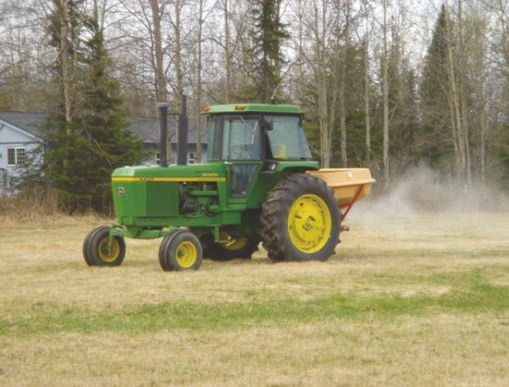
- Soil testing is the key to identifying nutrient and pH deficiencies of potential pasture ground. The UAF Cooperative Extension offers publications on how to test soils (Managing Alaska Soils and Soil Sampling) and where to have soils tested (Factors to Consider in Selecting a Soils Testing Lab). Soil fertility is a measure of the amount of essential plant nutrients present in a given soil. This is especially important for determining nitrogen (N), phosphorus (P) and potassium (K) levels, the three major plant nutrients required by all forage plants. Soil testing will measure these three major nutrient concentrations, along with other important secondary nutrients and micronutrients. Using the soil test results, Extension agents can make fertilizer recommendations, which, if followed, will compensate for most soil nutrient deficiencies. It is recommended that you test your soil every three to four years. This will help you determine the need for additional lime and fertilizer.
- Liming Requirements: Measuring soil pH, — soil acidity/alkalinity — is an important part of a general soil analysis. An SMP buffer test will help to refine the liming recommendation. SMP buffer results can be plugged directly into Table 4 of Extension publication Fertilizer Nutrient Sources and Lime to determine liming recommendations for acid soils. Most soils labs offer this test, often at no additional charge.
- Tissue analysis: Sulfur deficiencies, common in many soils across Alaska, are best measured from leaf tissue samples taken from vigorously growing forage plants found in the vegetative stage of development (preflower stem elongation). Extension publication Plant Tissue Testing offers guidelines for taking the correct plant tissue sample. When you send in your sample, request total nitrogen and total sulfur analysis. The optimum ratio of nitrogen to sulfur in Alaska timothy hay crops is somewhere between 9:1 and 12:1. Anything much greater indicates a potential sulfur deficiency.
- Salt: While salt is usually more of an issue in greenhouse soils than in forage crop soils, concentrations can exceed toxic levels in Alaska forage crops under certain circumstances. Fertilizers are salts. Excessive applications of fertilizers, especially those high in nitrogen (like urea), can have devastating effects. An electrical conductivity (EC) test will measure the amount of salt in a given amount of soil. Depending upon crop maturity, available water and soil type, EC values above 1.5 mmho/cm may be enough to damage or kill plants. When submitting a soil sample, you must request an EC test from your lab of choice. Often there is no additional charge for this test.
- Compaction: Keeping heavy equipment off pastures, especially in the spring and fall, when they are soft, is helpful. Off-season uses such as snow machining, dog mushing and ice skating, as well as aircraft runway and playground activities, can lead to compaction of the soil, which may hinder plant health and regrowth potential. In general, the less equipment and foot traffic your fields receive, the healthier they will be.
- Erosion: Poor management of soils can quickly lead to soil erosion, especially in areas of Alaska with high rainfall, slopes or high wind. NRCS has a tool for determining soil erosion rates: the Revised Universal Soil Loss Equation II (RUSLE II). It works for pastures developed on tilled ground and looks at long-term erosion effects by analyzing soil type, slope, length of fields, tillage practices, etc.
Overseeding
Pastures whose stands become spotty or weak may initially benefit from overseeding, or spreading new seed over an existing stand of grass. Establishment of this new seed will be enhanced if you can roughen up or harrow the soil where the bare spots exist prior to overseeding, and roll or pack the areas after seeding. Overseeding works especially well the first year following total renovation to fill in weak spots and can be effective in established stands if done correctly.
Weed Control
A great stand of pasture grass goes a long way in preventing weeds from getting established. If allowed to get a foothold, invasive and/or noxious weeds can ruin a pasture, leaving it unfit for your horses. Overstocking and/or under fertilizing a pasture, poor seedbed preparation during renovation and mismanagement of the existing stands will all lead to pasture stand decline, reducing available forage and ultimately increasing weed populations. Consult your local Extension agent for pasture management and weed control options.
Pasture Renovation
Traditionally, pasture renovation has required deep tillage to turn and bury the sod and weeds, along with disking and/or rototilling to break up the clods, incorporate lime and fertilizers and prepare a smooth seedbed. In Alaska, pasture topsoils are not always deep enough to facilitate deep tillage, so plowing is left to the lucky forage grass growers who have fields containing deep topsoils. For the majority of Alaska pasture renovators, the rototiller is the reclamation tool of choice.
Equipment
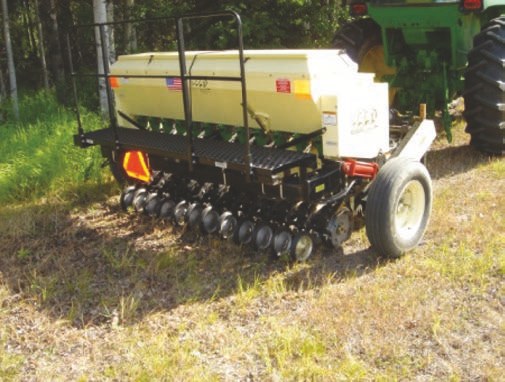
Many small horse pasture owners do not possess the equipment to renovate their own pastures. In most communities, there are people with the equipment available to do the work — for a price. It never hurts to check references, for if done properly, a well-established and managed pasture can last for many years, while a poorly developed pasture may never be of use, other than as a loafing area.
Most Alaska small pasture renovations involve some type of tillage, which may include a light disking, but usually relies upon some type of rototilling to break up, disperse and bury sod while preparing the soil, incorporating lime and fertilizers and developing a smooth seed bed. Depending upon the age and condition of the stand being renovated and the size and weight of the tiller used, this type of operation takes considerable time and experience to make sure the sod is broken up properly and buried as deeply as possible, while preparing a smooth, uniform seedbed.
Land prep is followed up with a seeding operation that uses either a drop spreader (Brillion-type) or spin spreader. Mechanical air-seeders and grain drills have also been successfully used to plant forage grass seed in Alaska. This type of planting equipment is more commonly found in the Interior or in the Matanuska-Susitna Valley, where barley and oats are regularly planted.
Packing the soil containing the newly dispensed seed is a critical next step that optimizes seed-to-soil contact. This is absolutely necessary to establish a uniform, strong grass pasture stand, regardless of the grass species or varieties used. Without the packing process, stand failure or, at best, irregular stand development will result.
No-till seeding has been used worldwide as an alternative to total renovation and broadcast seeding in forage crop establishment. No-till seeding equipment is available in Alaska, with some for rent through local Soil and Water Conservation districts. Unfortunately, there have been mixed results using no-till seeding in various locations across Alaska. No-till seeding can be successful for incorporating annuals, such as oats, into a stand, but results have been so unreliable when no-tilling the smaller seeds of perennial grass species into an existing stand that it cannot be recommended at this time.
Forage Species Selection
Alaska is limited to cool season forage grass varieties that do not exhibit photoperiod sensitivity. That is why some Norwegian and northern British Columbia species grow well here, while few species from the Lower 48 survive. Pasture grasses include Kentucky bluegrass and creeping red fescue varieties adapted to Alaska’s harsh climate. Unfortunately, timothy and smooth brome grass do not make good pasture grasses since they only tolerate grazing in the vegetative and post seed development stages of plant growth. The following list summarizes our most popular current pasture grass options:
- Kentucky bluegrass: Nugget, Merion, Park
- Creeping red fescue: Arctared, Boreal
An Alaska turf or lawn seed mix is often recommended for pasture seeding because it uses the same recommended varieties as the pasture mixes and is readily available throughout Alaska.
Seeding Rates and Seed Quality
- Seeding Rates: High quality land prep and fine seedbed development, followed by proper rolling and packing, requires considerably less seed than poorly prepared and poorly packed seedbeds.
Recommendations for planting Kentucky bluegrass and red fescue varieties fluctuate between 6 and 20 pounds of pure live seed per acre, depending upon the equipment used and the seedbed conditions. In general, the more accurate grain drills and no-till seeders require less seed, while broadcast seeders require more seed to establish high quality stands.
Likewise, fine-tilled and well-developed seedbeds require much less seed than rough, cloddy seedbeds. The availability of postseeding packing equipment will also play a major role in determining seeding rates.
- Pure live seed is based on germination testing of the seed lot. Extension publication Procedures for the Wet Towel Germination Test offers guidelines for estimating pure live seed percentages.
The use of “certified” high-quality, weed-free seed cannot be overemphasized. Many potential Alaska pastures and hay fields have been ruined by using cheap seed sources. Use certified forage grass seed whenever possible. The extra money paid per pound of seed assures you are not buying weed problems along with your crop seed. Check with the Alaska Plant Materials Center at 907-745-4469 for certified seed availability and testing
Time of Planting
Regardless of the time chosen for planting Alaska forage crops, one must assume a risk that the effort may fail. Unpredictable weather, available time to renovate, equipment issues, soil moisture, quality of land preparation and a dozen other variables all play critical roles in the success or failure of the forage planting effort.
There are basically three schools of thought on seeding forages under dry-land conditions. The first focuses on a spring planting date and getting the field prepped and ready to go as early as possible, which may include some preparation from the previous fall. This allows an entire growing season (once the stand is established) for the development of the young seedlings before the onset of winter. Wet spring rains can delay this procedure into the drier summer months, potentially inhibiting germination and slowing establishment. Despite the risks, this is the preferred timing for total pasture renovation in Alaska.
The second idea is to wait until the animals use the available forage through mid-July, then do a total renovation, fertilizing and seeding before a mid-August cutoff period for planting. This puts a lot of pressure on the producer to complete the renovation in a timely manner, but the payoff is that germination and seedling development benefit from late summer rainfall, which historically has been more reliable than late spring rains. Unfortunately, the weather does not always cooperate, and it may be necessary to postpone the effort until the following year. Also, if winter weather comes in September, there may be inadequate time for seedling development prior to freeze up, damaging or killing stands.
The third school of thought requires late summer land preparation followed by a fallow period until freeze up, when the seed is then broadcast onto the field with the idea that it will work its way into the soil over the winter and sit dormant until the snows thaw. The combination of early spring moisture and warming temperatures would then allow the seed to germinate much earlier than if planted in late spring, giving the plants a jump on the growing season. This is probably the riskiest of the three timing examples, although those who have mastered the procedure claim average success rates.
Fertilization
Each pasture and hay crop to be planted around Alaska has unique soil and climatic characteristics and conditions requiring different fertilizer recommendations. For statewide forage crop fertilizer recommendations, see Extension publication Forage Crops: Field Crop Fertilizer Recommendations for Alaska.
Pasture Management
Once the desired pasture grass stand is established, pasture management will determine its longevity and sustainability as both a food source and a containment area for your horses. The following topics highlight important facets of pasture management.
Fertilization
To maintain a healthy, productive pasture, you must fertilize annually or you will end up with an oversize paddock with potential problems.
- Type: Commercial fertilizers are the fertilizers most commonly used to address pasture soil nutrient deficiencies in Alaska. Consult with your local Extension agent for recommendations.
Organic grass growers cannot use most commercial fertilizers. Since domesticated legumes are not a viable option in Alaska (short-lived and under-productive as perennials), manures, fishmeals, seaweeds and compost are some of the alternative fertilizers to be considered. These products should be monitored and managed as carefully as commercial fertilizers. Also, organic fertilizers release nutrients over time, not rapidly like commercial fertilizers, so much greater initial amounts of organic fertilizer are needed to achieve similar soil fertility measurements. It is essential to account for past years’ organic fertilizer applications when determining fertilizer rates for the current growing season. The best way to help monitor mineralizable N, P and K levels in a given organic pasture is through a comprehensive annual soil-testing program.
- Timing: Matching plant needs with properly timed fertilizer applications over the growing season is the key to a healthy, productive pasture. With high rainfall conditions or irrigation, pastures will benefit from two to three fertilizer applications six to eight weeks apart. Under dry-land conditions, two fertilizer applications, one in spring and the one around mid-to late July, have worked well for Alaska pastures.
Fields with sulfur deficiencies should target sulfur fertilization in the spring.
By correctly timing fertilization to plant needs, your fertilization efforts will be better used by the plant (less fertilizer waste/loss), have less chance to damage the environment from leached or volatilized nutrient losses, and may better coincide with field conditions conducive to application equipment operations.
Nutrient Cycling
Eighty to 90 percent of soil nutrients used by pasture grass are cycled back to the soil from the urine and manure of animals grazing on pastures. Following are some suggestions for maximizing nutrient cycling in pastures:
- Graze animals evenly across the pasture (via rotational grazing) for optimum urine and manure distribution.
- Harrow the pasture before and after grazing to evenly distribute cycled nutrients.
- Balance available residual nutrients with fertilizer recommendations to take into account cycled nutrients. This requires annual soil testing until annual fertility loading standards from cycled nutrients can be established.
Paddock-Pasture Relationship
A paddock or corral is an area fenced off from the rest of the pasture. Its size is variable, but is usually one-fourth to one-half acre. The paddock is necessary since the horse will be spending most of its time there rather than in the pasture. By using a paddock, a horse owner is able to manage the pasture.
When locating the paddock, select a well-drained area with a sunny aspect and close to the house. Generally, higher ground will have the best drainage. The ground surface of the paddock should be overlain with sand, pea-size gravel or sawdust to improve surface drainage and help keep the paddock from becoming a mud hole.
Grazing Management
- Grazing Period: The length of time the horses graze is dependent upon the number of animals grazed, size of pasture and productivity of the grass. The concept is to manage the pasture resource first. When you manage the grass, this will determine the carrying capacity of the pasture and duration of the grazing periods.
Do not use specific dates for turning out animals onto pastures in the spring. Examine the grass and base your decision on the stage of grass growth. Wait until at least 6 inches of grass is available before turning horses out to pasture. This will allow young grass plants to become better established and stronger. Remember to remove the horses when half the pasture forage is consumed. When the forage grows back, you can graze it again. Leaving half of the forage base will promote a healthy, vigorous and long-lasting forage stand.
During extended rainy periods in Alaska, damage to the pasture can occur through trampling and tearing up of the sod. During these wet periods, horses should be given a shorter grazing time, thus requiring more time in the paddock.
Exercise the horses prior to turning them out to graze. Horses often need to frolic and run after being confined to smaller areas. Exercising will help to prevent them from tearing up the sod, which reduces pasture productivity.
- Grass Leaf Length: A plant is an organism that must have food to live and grow, just as a horse needs food to live and grow. Unlike an animal, a plant manufactures its own food through a process called photosynthesis. The plant’s green leaves are the factories in which this activity takes place. There is a direct relationship between photosynthetic tissue and the volume of forage produced. It is important that the plant always have adequate leaf area to provide sufficient food for itself to maintain its growth.
Optimum forage productivity can be obtained when the grass leaf length is maintained at 4 to 8 inches. Twice the regrowth volume of forage is produced compared to a grass maintained at a 2- to 4-inch leaf length.
The paddock is used to keep horses off the pasture so that a grass leaf length of 4 to 8 inches can be maintained throughout the grazing season.
In the fall, leave a 4- to 6-inch leaf growth before freeze up.
- Rotational Grazing: The use of cross fences to establish two or more areas in a pasture allows horses to graze only portions of the pasture at a time. With this system, the horse owner can manage grass length by allowing the horses to graze separate pasture areas, allowing regrowth when and where needed.
A deferred grazing system uses the principle of not grazing a particular pasture for a specific period of time, until a prescribed grass height is reached. This requires at least two pastures.
Incorporating a third pasture offers the potential to use a rest rotation system. This system requires one of the three or more pastures to be rested an entire growing season. This is accomplished by allowing the first pasture grazed in the spring to be rested a full year plus a spring. This is especially useful when renovating other pastures in the system or when stockpiling forage for late fall use.
Pasture Integrated Weed Control
Poisonous Weeds
Management of the horse pasture helps to prevent sickness and death from poisonous weeds. Make a regular routine of walking your pastures to look for weeds. Become familiar with what poisonous weeds look like. Your local Cooperative Extension Service IPM technician can help you accurately identify weeds.
A well-managed pasture provides a sufficient volume of forage so that horses will not be forced into eating any poisonous plants present within the pasture. Incidental eating of poisonous plants in a pasture generally causes no health problems, although long-term exposure can kill a horse. A well-managed pasture grass also discourages the invasion of poisonous weeds by outcompeting them for water, nutrients and sunlight. Examples of poisonous weeds found in Alaska pastures include horsetail (Equisetum spp.), mature seed pods on some species of lupine (Lupinus spp.), poison water hemlock (Cicuta mackenziana), false hellebore (Veratrum eschscholtzii), arrowgrass (Triglochin maritima), wild iris (Iris setosa), delphinium and some lichens.
Noxious and Invasive Weeds
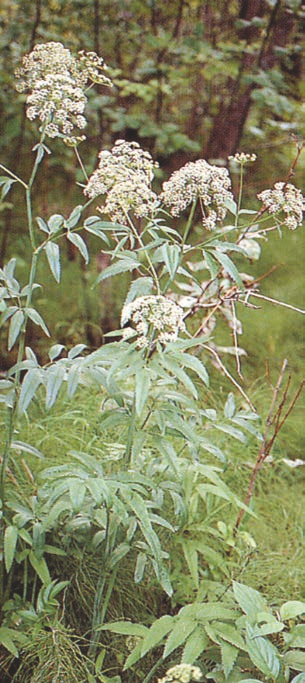
Invasive and noxious weeds, although generally nonpoisonous, may negatively impact pasture quality (and thus horse nutrition) by displacing forage and replacing it with low quality alternatives that may be unpalatable to horses and other livestock. These types of weeds are notorious for spreading rapidly, outcompeting crops for water and nutrients and for being difficult to control once well established. Examples of common Alaska invasive and troublesome pasture weeds include foxtail barley (Hordeum jubatum), corn spurry (Spergula arvensis), hempnettle (Galeopsis tetrahit), Canada thistle (Cirsium arvense) and hawksbeard (Crepis spp.). For lists of problematic weeds found in forage grass across the Western states (including Alaska), consult Pest Management Strategic Plan for Non-Rangeland Forages (excluding Alfalfa) in the Western States, an excellent regional reference produced by the Western IPM Center and USDA/CSREES.
General Weed Control
In general, weeds are easiest to control when they are first introduced at the seedling stage and when the initial populations are small. As weeds mature and spread, control becomes more difficult, until they reach a size and density where control may become impossible.
Proper identification is the first step in an integrated weed control approach. This is followed by an assessment of the weed’s biology to identify the most vulnerable stages of development.
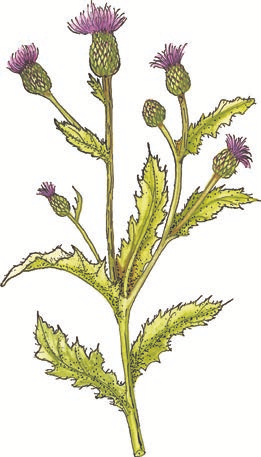 For organic pasture producers, monitoring pastures on a regular basis and digging
out emerging weeds is critical, for once weeds get established in an organic system,
little can be done and pasture decline will most likely follow. Biocontrol using horses
and goats to eat the weeds may help.
For organic pasture producers, monitoring pastures on a regular basis and digging
out emerging weeds is critical, for once weeds get established in an organic system,
little can be done and pasture decline will most likely follow. Biocontrol using horses
and goats to eat the weeds may help.
For conventional pasture managers, chemical control offers another tool in the arsenal of weed control weaponry. For conventional growers, as for organic producers, early detection of weeds allows for the easiest control. Herbicides, when properly selected and applied at the right time, can offer outstanding results when dealing with small to emerging weed populations. Herbicide labels are enforceable documents that need to be followed correctly to make a legal application. For private and commercial pesticide use, training classes are offered through the UAF Cooperative Extension Service, under a partnership with the Alaska Department of Environmental Conservation Pesticide Control Program. Contact your local Extension office for weed identification and control recommendations.
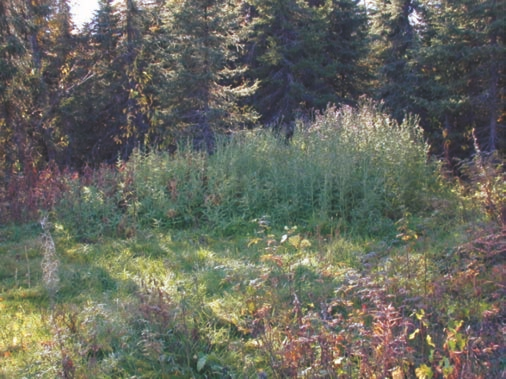
References
UAF Cooperative Extension publications
Factors to Consider in Selecting a Soil Testing Laboratory, FGV-00045
Fertilizer Nutrient Sources and Lime: Field Crop Fertilizer Recommendations for Alaska, FGV-00348
Plant Tissue Testing, FGV-00244
Procedures for the Wet Towel Germination Test, FGV-00249
Soil Sampling, FGV-00044
Managing Alaska Soils, FGV-00043
Other references
Hart, K., Brooks, R. and J. Church. 2008. Pasture Principles for Smaller Acreages. University of Idaho Extension. Bulletin 849.
Jahns, T., Hirnyck, R., Gowney, L. and S. Coates. 2007. Pest Management Strategic Plan for Non-Rangeland Forages (excluding Alfalfa) in the Western States. Western IPM Center/ USDA/CSREES/Extension Service and the USDA Office of Pest Management Policy.
Miller, C.A., et. al. 1991. Revegetative Guide for Conservation Use in Alaska. UAF Cooperative Extension publication 100C-00146 (discontinued). 78pp.
Marla Lowder, Extension Faculty, 4-H and Youth Development. Originally written by Marla Lowder and Thomas R. Jahns, former Extension Faculty, Agriculture and Horticulture.
Revised June 2024
